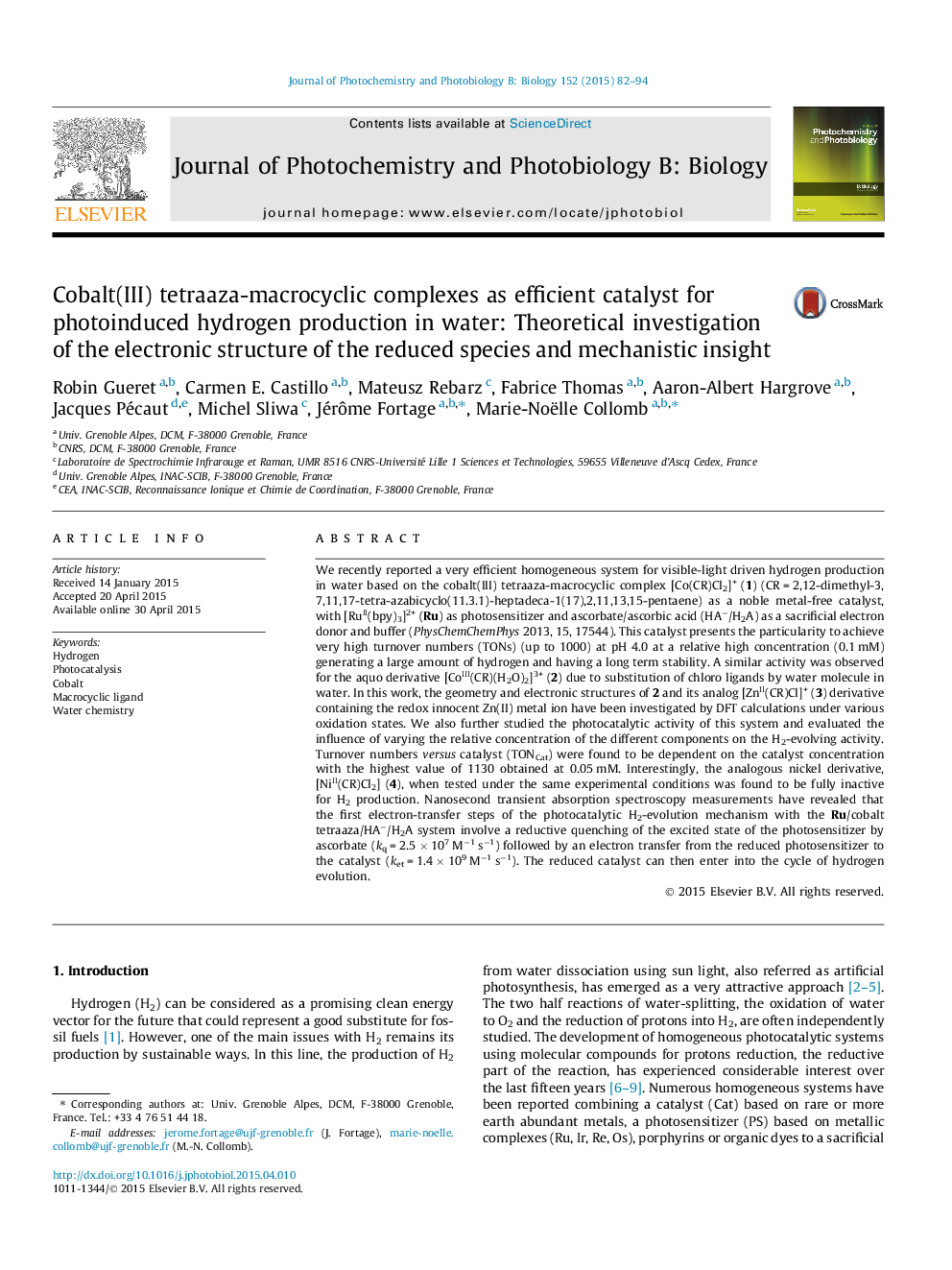| کد مقاله | کد نشریه | سال انتشار | مقاله انگلیسی | نسخه تمام متن |
|---|---|---|---|---|
| 29546 | 44421 | 2015 | 13 صفحه PDF | دانلود رایگان |

• Photoctalytic H2 production using a cobalt tetra-azacatalysts.
• Ruthenium complexes have been used as photosensitizers in these photocatalytic systems in association with a sacrificial electron donor.
• Assembled molecular structures in which the catalyst and the photosensitizer are covalently linked are also presented.
• Systems functioning in pure aqueous solution are specially highlighted and some of them have proved particularly efficient.
• Mechanistic aspects of photochemical H2 evolution catalyzed by these multi-component systems will be also discussed in detail.
We recently reported a very efficient homogeneous system for visible-light driven hydrogen production in water based on the cobalt(III) tetraaza-macrocyclic complex [Co(CR)Cl2]+ (1) (CR = 2,12-dimethyl-3,7,11,17-tetra-azabicyclo(11.3.1)-heptadeca-1(17),2,11,13,15-pentaene) as a noble metal-free catalyst, with [RuII(bpy)3]2+ (Ru) as photosensitizer and ascorbate/ascorbic acid (HA−/H2A) as a sacrificial electron donor and buffer (PhysChemChemPhys 2013, 15, 17544). This catalyst presents the particularity to achieve very high turnover numbers (TONs) (up to 1000) at pH 4.0 at a relative high concentration (0.1 mM) generating a large amount of hydrogen and having a long term stability. A similar activity was observed for the aquo derivative [CoIII(CR)(H2O)2]3+ (2) due to substitution of chloro ligands by water molecule in water. In this work, the geometry and electronic structures of 2 and its analog [ZnII(CR)Cl]+ (3) derivative containing the redox innocent Zn(II) metal ion have been investigated by DFT calculations under various oxidation states. We also further studied the photocatalytic activity of this system and evaluated the influence of varying the relative concentration of the different components on the H2-evolving activity. Turnover numbers versus catalyst (TONCat) were found to be dependent on the catalyst concentration with the highest value of 1130 obtained at 0.05 mM. Interestingly, the analogous nickel derivative, [NiII(CR)Cl2] (4), when tested under the same experimental conditions was found to be fully inactive for H2 production. Nanosecond transient absorption spectroscopy measurements have revealed that the first electron-transfer steps of the photocatalytic H2-evolution mechanism with the Ru/cobalt tetraaza/HA−/H2A system involve a reductive quenching of the excited state of the photosensitizer by ascorbate (kq = 2.5 × 107 M−1 s−1) followed by an electron transfer from the reduced photosensitizer to the catalyst (ket = 1.4 × 109 M−1 s−1). The reduced catalyst can then enter into the cycle of hydrogen evolution.
Journal: Journal of Photochemistry and Photobiology B: Biology - Volume 152, Part A, November 2015, Pages 82–94